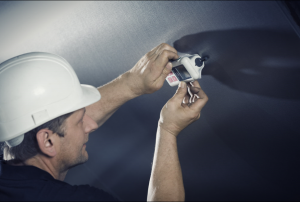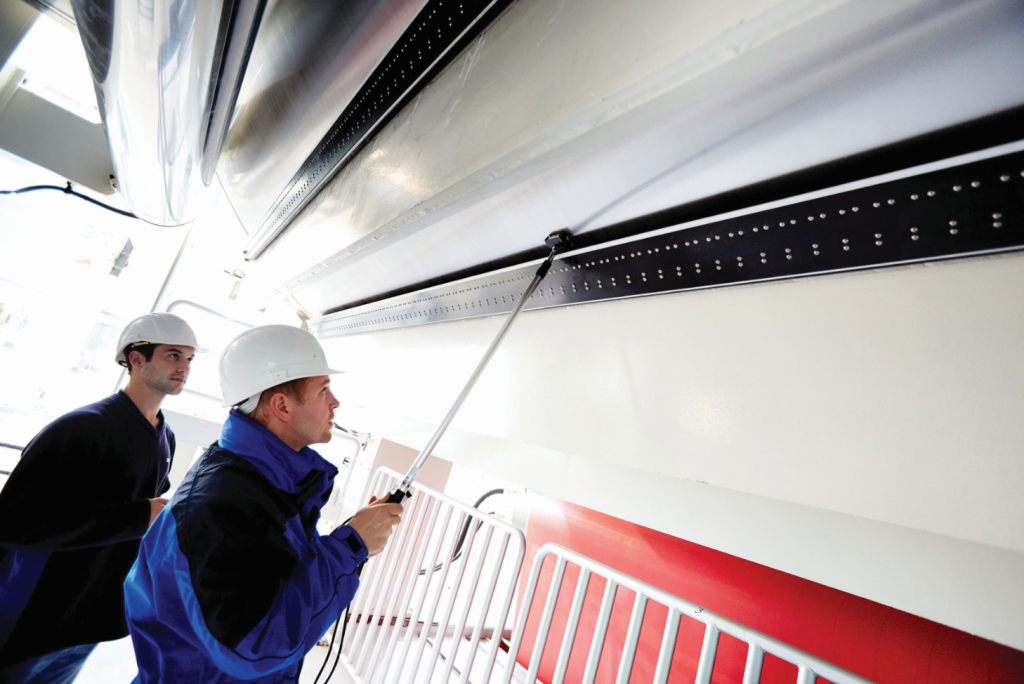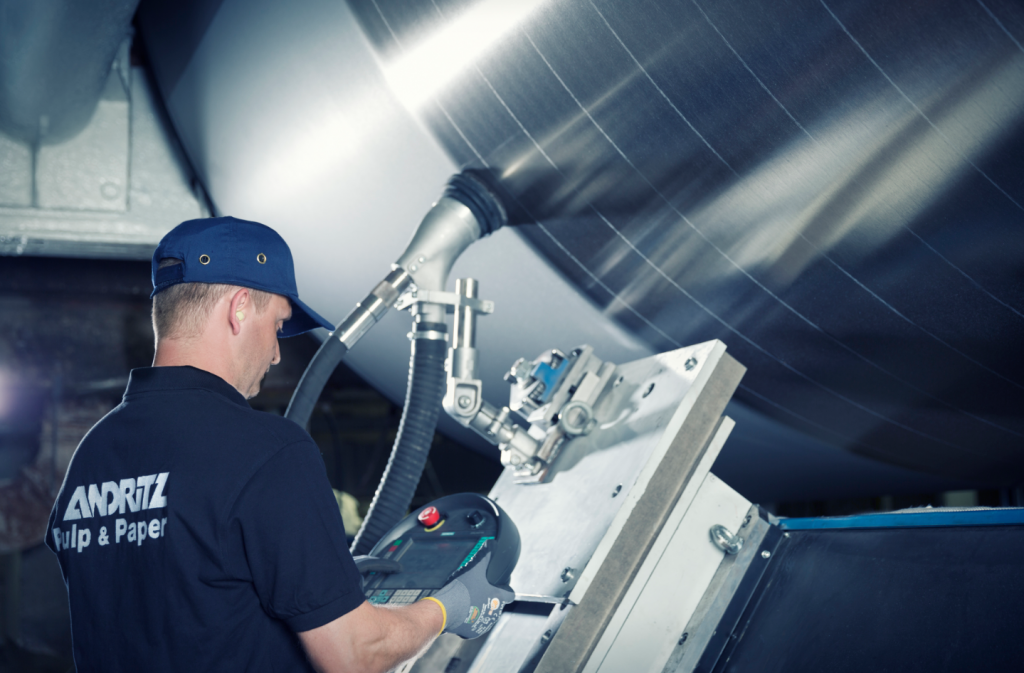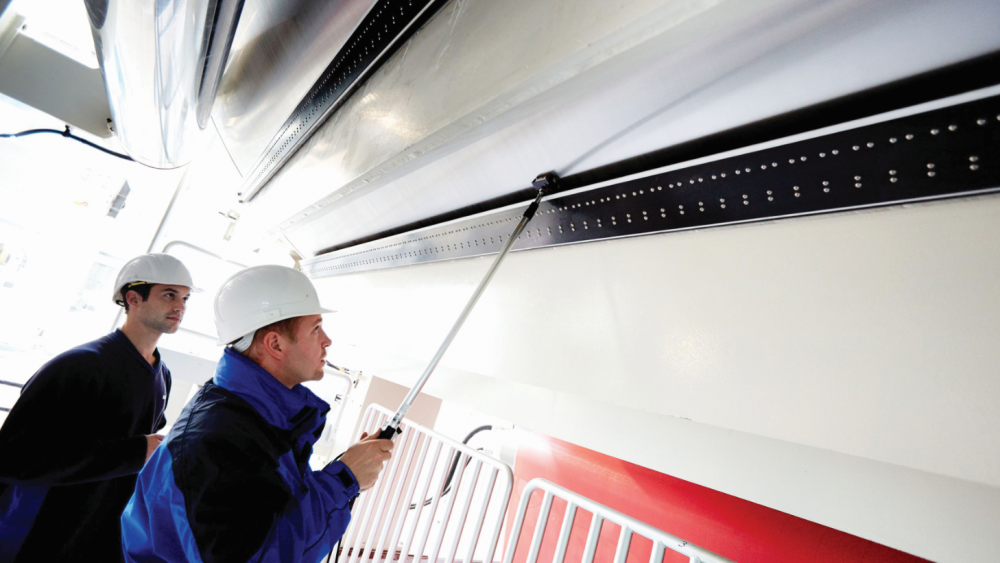..
By taking a broad view, combined with detailed process knowledge and modern tools, troublesome Yankee problems can usually be solved quite rapidly
By Erwin Walcher and Wolfgang Herbst, Andritz AG
The Yankee is often called the “Heart of the Tissue Machine”. This is true, as the Yankee controls the most important tissue paper characteristics, including softness, absorbency and strength. In addition, the Yankee has a very large impact on overall production costs, since over 60% of the total energy used is expended in the Yankee dryer and its associated hood section.
 The Yankee, the “Heart of the Tissue Machine”
The Yankee, the “Heart of the Tissue Machine”
Therefore, like any heart, it is important to keep it operating smoothly and efficiently. But actually, to make this happen depends on a series of actions, both reactive and preventive, that needs to be carried out. This article addresses these actions and it explains the importance of each of them for achieving proper and safe Yankee operation. The targeted result is a positive impact in terms of safety, sheet quality and process stability, leading to improvements in overall cost efficiency and profitability of the operation.
Seeing the bigger picture
In the past Yankee service issues were often limited to grinding and metallizing, as well as giving some limited focus to mechanical services. Today we are, however, able to see the bigger picture by starting in the engineering phase and – by using a comprehensive set of new tools – get a better overview of the entire tissue making process and the interactions between the Yankee and other pieces of equipment or processes.
Let us start by providing a list of logical service actions that should be carried out. We will then continue with brief comments on how modern tools and methods can help rectify Yankee deficiencies and keep the equipment operating safely and for a longer period of time. In our experience, Yankee service actions can be divided into:
A. Things that the mill should do on a regular or even daily basis
B. Actions that should be undertaken occasionally, often by or in cooperation with third-party service providers
C. Other actions to be taken on a less frequent basis, but which are vital for long-term safety, runnability and that will extend the lifetime of the equipment.
Some Yankee experts, to whom these procedures are well known, may find our comments somewhat obvious. But we are surprised to note how often such issues are neglected by tissuemakers. We do hope that this information will be help raising attention in this regard.
A. First things first – actions for the mill teams
To ensure proper operation of the Yankee, there are some basic procedures that mill personnel such as operators and engineers should carry out on a regular basis, e.g. on a daily basis or even during each shift. These normally include:
1. Checking the pH-value of the steam-supply water to avoid magnetite (Fe3O4) formation. A pH value above 12 accelerates thickening of the magnetite, which can cause a narrowing or blockage of pipes, hindering the condensate flow. Another factor is that the magnetite layer can become porous or partly dissolve after some years, causing the magnetite layer to have varying thicknesses. A thick magnetite layer leads to a reduction of heat transfer ability. In total, any or all of these effects cause reduced drying efficiency.
2. Careful visual inspection to ensure an equal/uniform build-up of MAP (Mono-ammonium phosphate) over the entire surface.
3. Functional check of the thermo-compressor and its default settings.
4. Regular inspections of the condition of the complete doctor system, including checks of its settings and adjustments, as well as load pressure and oscillating function.
5. Regular visual inspections of the Yankee surface to detect spots and other deviations like chatter marks and asymmetrical wear.
 Inspection of the Yankee surface
Inspection of the Yankee surface
B. Next level of prevention and optimization
Assuming all the actions outlined in section A are in order, the next steps involve actions that are recommended to be undertaken on a less frequent cycle, perhaps each month, every quarter or year, depending on the specific machine and its operating situation. Some of these can be done by the mill’s own personnel, while others are best accomplished by trained professional service providers.
1. Regular OTR (on-the-run) measurements to get a clear picture of the crowning shape and the temperature profile of the Yankee. These should be done under true operational conditions, to detect deviations of the shape and the crowning as well as the efficiency of the condensate removal system over the whole Yankee circumference.
2. Evaluation of the set points for the chemical coating, on a frequent basis, to ensure a proper application of MAP (mono-ammonium phosphate).
3. Frequent cleaning of the filters of the air circulation fans of the steam heating hood system to keep the drying capacity on a highest level and to save energy costs.
4. Annual inspection of the inner condensate removal system for items such as the condition of gaskets, plugging of soda straws, etc.
 Diagnostics and analyses such as on-the-run measurements (OTR) to check the Yankee’s shape and temperature profile and to determine the right time for regrinding and metallizing.
Diagnostics and analyses such as on-the-run measurements (OTR) to check the Yankee’s shape and temperature profile and to determine the right time for regrinding and metallizing.
C. Occasional, less frequent, but vitally important services and inspections
This next set of actions is meant to be carried out much less frequently, but this certainly does not mean they should be considered to be optional. By performing them from time to time the safety of your machine operation will be improved and the lifetime of the equipment will be prolonged. These inspections and repairs can also help avoid unplanned, and very costly, breakdowns and associated downtime.
1. Routine NDT (Non-Destructive Testing) safety inspections and vibration analyses of the Yankee according TAPPI guidelines. Some examples of these are:
–Head tilt
–Shell thickness measurement
–MPI – Magnetic Particle Inspection
–Ultrasonic tests of bolts/screws (pressure containing)
–Spigot fit measurement
–Cracks, wear, erosion, corrosion & damage of External parts
–Cracks, wear, erosion, corrosion & damage of Internal parts
–Shell run out
–Soda straws & Header condition
–Bearing vibration condition
–Internal piping and gasket condition
2. Regrinding, polishing and metallizing of the Yankee surface. In case of deviations and damages at the surface (chatter marks, indentations, deviation of the crowning, roughness, etc.) the metallizing must be reground or polished. If this means that the remaining thickness of the metallizing is under 0.4mm it is recommended that the metallizing has to be renewed.
3. Spot repair of the metallizing.
4. Renewal of the existing metallizing, if needed.
5. Renewal of the internals and gaskets in the condensate removal system.
 Sand blasting of the Yankee surface
Sand blasting of the Yankee surface
Service starts with ‘Forward-Looking engineering’
We began developing our more complete Yankee Lifecycle Management Services about 10 years ago when Andritz started manufacturing steel Yankee dryers. Before that a number of specialized auxiliary services like metallizing were normally handled by third party companies that were specialized in one or two areas only.
Our philosophy is that service actually starts with engineering, something we call “Forward-Looking engineering.” This approach extracts the benefits that we see can be achieved by following the Yankee through its entire lifecycle – essentially from when it is first drawn in the engineering phase, through the manufacturing of the Yankee dryer, and on to transport to the mill, assembly, commissioning and actual operations. Then, once it is running, based on an intimate knowledge of the design and history of the Yankee, true Lifecycle Management becomes possible. This applies not just to new tissue machines, but also for replacement Yankees.
Starting in the engineering phase, by using state-of-the-art tools like FEA (Finite Element Analysis) to calculate fracture mechanics, and advanced vibration analyses, we can build in the required safety margins. This can, for example, reduce the frequency of safety testing on welding seams, while still offering safe operation of course.
Diagnostics and analysis
As mentioned earlier, on-the-run (OTR) measurement systems are a key tool which allow checking of parameters such as the shape and the temperature profile while the Yankee is operating. If we notice any potential problem areas or deficiencies, it is easier and faster to identify the root cause as we have detailed knowledge of how the Yankee is engineered.
Acoustic emission (AE) testing is also a powerful tool that is becoming more and more used and is actually substituting the hydro-pressure tests in many countries. The AE test involves applying sensors on the Yankee surface and then pressurizing the cylinder. This can then detect areas where there are cracks or potential cracks, even if they are extremely small. The big advantage versus the hydro test is that you do not have to fill the Yankee with water, and therefore do not need to do all of the frame reinforcement work to support the additional weight, which is required for hydro testing. The bottom line is: This method is much simpler and also more sensitive to finding potential problems. The other advantage of AE is that it is actually a quantitative measurement, whereas the pressure test gives you just a simple “pass or fail”. AE is thus clearly superior at identifying possible faults before they become failures.
Interactions and interconnections are extremely important
As a manufacturer of machines, we also “take care of” and have extensive knowledge of operations like pressing, hood systems, doctoring, and chemical coating – basically everything that’s in contact with or influencing the Yankee. This gives a better overview of total interactions. For example, if someone has edge problems on the sheet they will typically look at the Yankee. But in our experience we have seen that it can be things other than the Yankee that are causing these problems, and therefore we know the steps to take to identify the root causes. Sometimes if you only look at the Yankee you may notice shortcomings, but these may not be the actual problem. Our experience is that problem areas should not be assessed individually, but should be subject to a holistic view. Obviously, many of the functions are interconnected and must be assessed that way.
Another example might be edge-drying problems, which tissue makers quite often automatically assume are originating from inside the dryer. Typical remedial action may be to adjust the soda straws. However, the real problem may often be found elsewhere, such as in the hood where we have seen cases where the blowing width was incorrectly set. Correcting that, by “seeing the bigger picture” quite often helps to eliminate the problems; By just looking into the cylinder you would never be able to sort out the entire issue.
In another case, a customer had problems with undefined spots on the Yankee surface but had no idea where they were coming from. We were looking for the root cause and did a vibration analysis to get a clear picture of the possible source. After evaluation of the results, it became clear that vibrations from the unstable doctor frame structure were causing the spots and the problem was rapidly rectified.
Summary and conclusions
When done correctly, Yankee services can play a key role in reducing downtime and energy consumption, while increasing quality, output, and ease of operation on a tissue machine. Quite often when there is a problem associated with a Yankee dryer a fair bit of detective work is required to identify the root cause. But by taking a broad view enabled by Forward Engineering, combined with detailed process knowledge and modern tools, the problem can usually be solved. This means the ‘Heart of the Tissue Machine’ can keep working smoothly, efficiently and safely for a longer time.



Comments are closed.